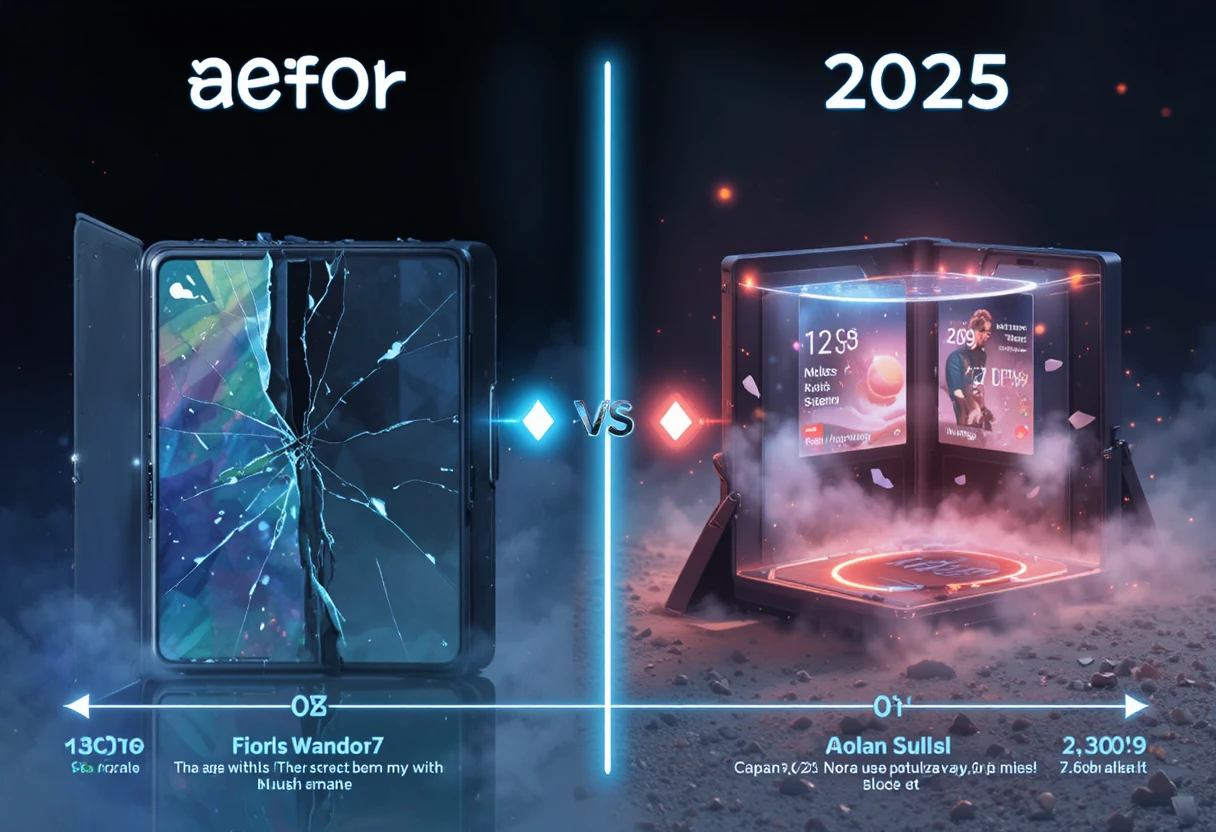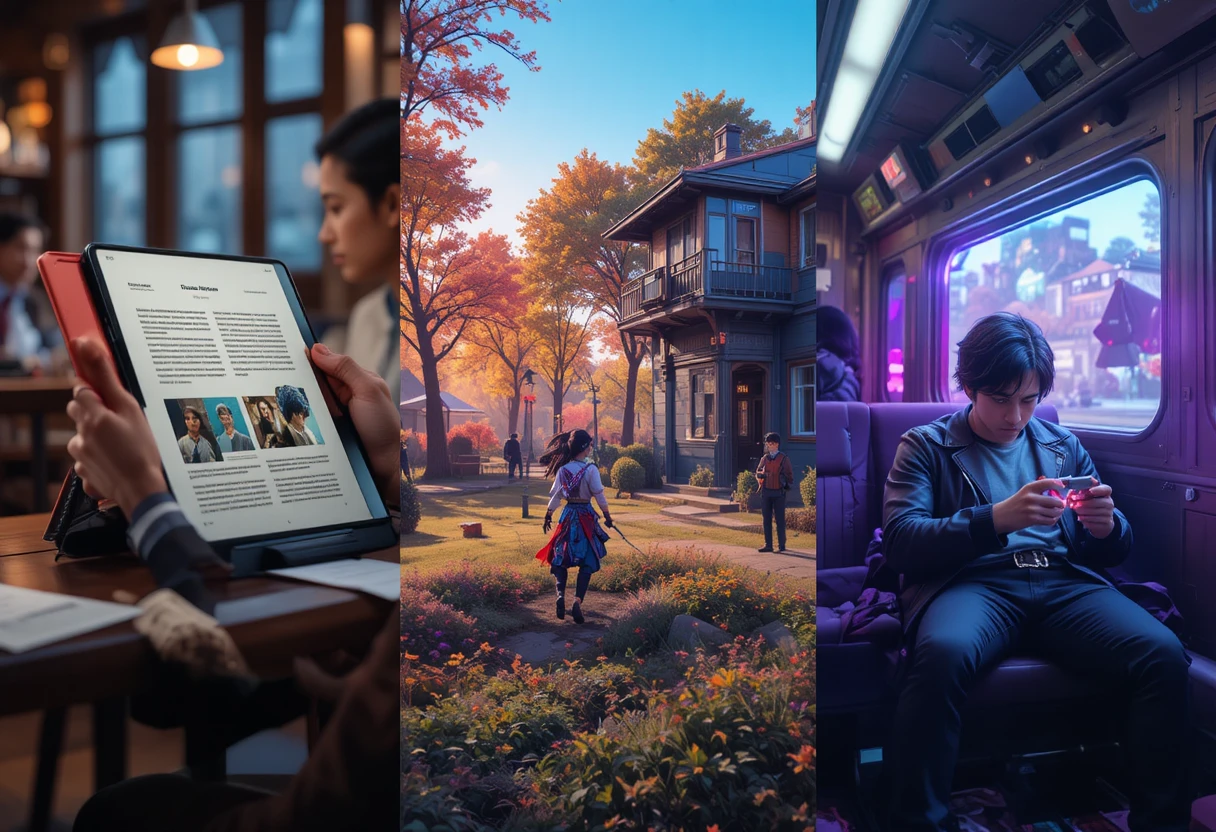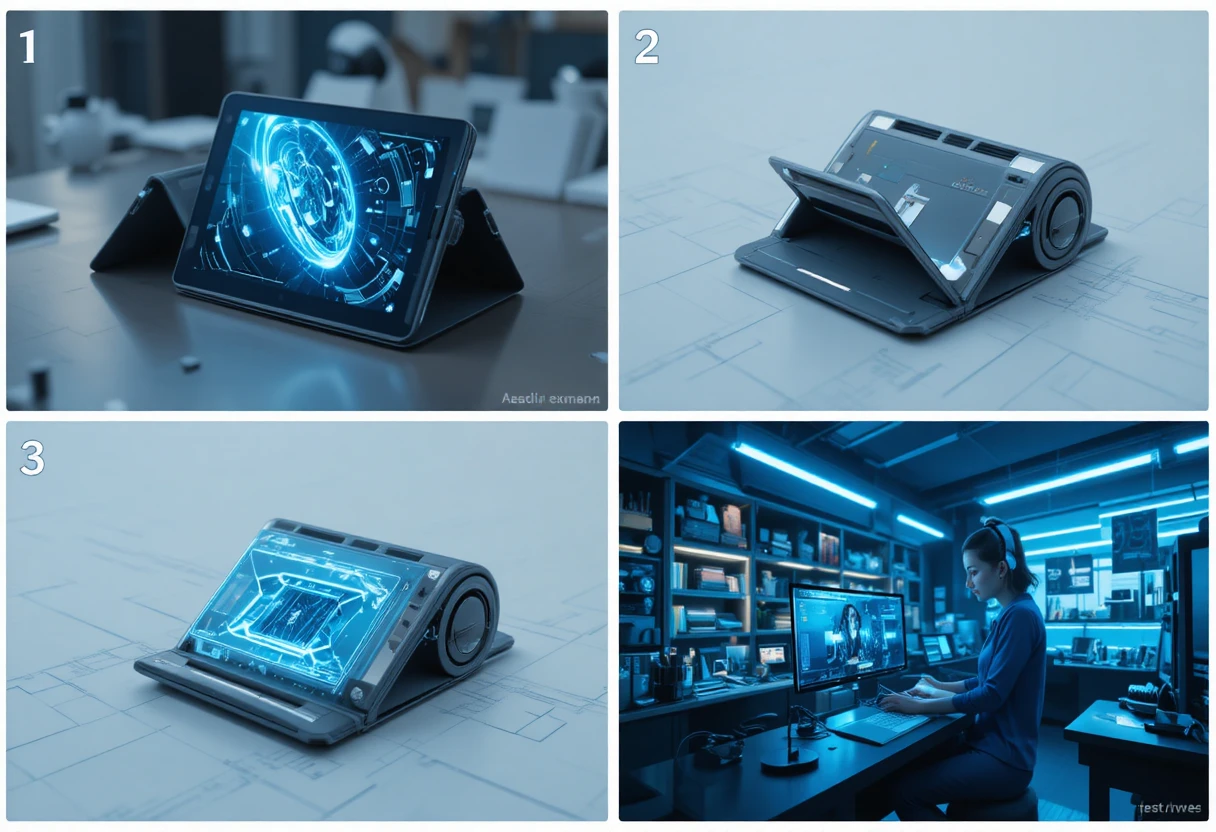Foldable Smartphone Revolution
In 2025, foldable smartphones have evolved from experimental novelties into mainstream powerhouses, redefining mobile computing with unprecedented versatility, productivity, and design freedom. What began as a niche category in 2019 with the Samsung Galaxy Fold has exploded into a $35 billion market, projected to surpass $50 billion by 2028. These devices—now in their seventh generation—blend the portability of a phone with the expansive real estate of a tablet, powered by ultra-thin glass, advanced hinge mechanisms, and AI-optimized multitasking software. As of October 22, 2025, over 120 million foldable units have shipped globally, with Samsung holding 52% market share, followed by Huawei (18%), Google (11%), and emerging players like Honor and Xiaomi.
This 3,000-word deep dive explores the technological breakthroughs, design innovations, software ecosystems, real-world applications, market dynamics, challenges, and future trajectory of the foldable smartphone revolution—proving that the era of rigid slabs is officially over.
The Genesis and Evolution of Foldables
The First Wave: 2019–2021 — Proof of Concept
The foldable era dawned on February 20, 2019, when Samsung unveiled the Galaxy Fold—a 7.3-inch inward-folding device with a 4.6-inch cover screen. Priced at $1,980, it suffered from durability issues: plastic screens scratched easily, hinges collected debris, and early units failed within days. Huawei responded with the Mate X, an outward-folding design, but supply chain constraints limited its reach.
Despite setbacks, these pioneers validated demand. By 2021, Samsung launched the Galaxy Z Fold3 and Z Flip3—introducing IPX8 water resistance, S Pen support, and under-display cameras (UDC). Sales jumped 300% year-over-year, with 8.2 million units shipped globally. The Flip series, with its clamshell form factor, appealed to fashion-conscious consumers, while the Fold targeted productivity users.
Second Generation: 2022–2023 — Refinement and Expansion
By 2022, durability became priority. Samsung adopted Ultra Thin Glass (UTG) 2.0, reducing crease visibility by 70% and increasing scratch resistance to Mohs 6. Hinge designs evolved into sweeper mechanisms—tiny brushes that eject dust—extending lifespan to 200,000 folds (approximately 5 years of daily use).
Google entered with the Pixel Fold in June 2023, featuring a passport-style horizontal fold and the widest cover screen (5.8 inches), optimized for one-handed use. Honor’s Magic V2, launched in China, achieved a record 9.9mm folded thickness—thinner than most slab phones.
Software matured with Flex Mode, enabling apps to split interfaces across halves when partially folded. Samsung’s One UI 5.1 introduced Taskbar and Drag & Split, mimicking desktop multitasking. By 2023, 21 million foldables shipped—a 150% increase from 2021.

Core Technologies Behind 2025 Foldables
Display Innovations: From Plastic to Diamond Glass
The Achilles’ heel of early foldables—screen durability—has been conquered through material science. In 2025, Corning Gorilla Glass Victus Flex and Schott UTG Pro dominate, combining polymer layers with nano-ceramic coatings. Samsung’s Dynamic AMOLED 3X achieves 2,600 nits peak brightness, HDR10+, and a 1–120Hz adaptive refresh rate across both screens.
Crease reduction reached 87% visibility drop via micro-lens array (MLA) technology, scattering light to mask the fold line. Huawei’s Kunlun Glass 2 in the Mate X6 claims drop resistance from 2 meters—rivaling traditional phones.
Under-display cameras (UDC) evolved into transparent OLED sub-pixels, achieving 40MP clarity with minimal visual obstruction. Oppo’s roll-to-expand concept (demoed at MWC 2025) hints at variable-size displays, stretching from 6.7 to 8.8 inches without a hinge.
Hinge Engineering: Precision at Micro Scale
Modern hinges are marvels of mechanical design. The dual-rail, multi-link hinge in the Galaxy Z Fold7 uses liquid metal alloys and carbon fiber cams, enabling free-stop folding from 0° to 180°. It supports Flex Mode at any angle, with magnetic stabilization for video calls.
Honor’s titanium droplet hinge (Magic V3) reduces weight by 18% while supporting 400,000 folds. Vivo’s X Fold3 Pro introduced aerospace-grade fiber plates, distributing stress evenly to prevent screen delamination.
Chipsets and Thermal Management
Foldables demand extreme efficiency. The Snapdragon 8 Elite for Galaxy (3nm) powers 2025 flagships, delivering 45% better GPU performance and 60% AI efficiency than 2023 chips. Google Tensor G4 in the Pixel 9 Pro Fold prioritizes on-device AI for real-time translation and photo editing across unfolded screens.
Thermal challenges—exacerbated by compact folded designs—are addressed via vapor chamber + graphene sheets. The OnePlus Open 2 uses dual cryogenic cooling, maintaining 60fps gaming for 2+ hours on its 8-inch inner display.
Software Ecosystems: Beyond Multitasking
One UI 7: The Gold Standard for Foldables
Samsung’s One UI 7 (Android 15-based) transforms foldables into productivity beasts. App Continuity seamlessly transitions apps when unfolding—start typing an email on the cover screen, finish on the 8.1-inch canvas. Multi-Active Window supports three split apps + two pop-ups, with S Pen Air Commands for precision input.
Flex Mode 2.0 adapts UIs dynamically: YouTube splits into video/controls, Spotify shows lyrics + playlist, and Microsoft Teams displays participants + chat + whiteboard. DeX on Fold turns the device into a wireless desktop when connected to a monitor.
Google Pixel UI and Android 15L
Android 15L (Large Screen Edition) mandates foldable optimizations. Apps must support aspect ratio switching, hinge-aware layouts, and posture APIs. Google’s Live Translate now works across unfolded screens, showing real-time subtitles in dual languages during video calls.
Third-party adoption surged: Adobe Photoshop, LumaFusion, and Affinity Designer offer dual-canvas modes, using one half for tools, the other for editing. Good Lock’s MultiStar lets users force any app into split-view.
Huawei HarmonyOS Next
In China, HarmonyOS Next (non-Android) powers 40% of foldables. Its Super Device feature enables drag-and-drop between phone, tablet, and laptop screens. The Mate X6 supports parallel vision—running two instances of the same app side-by-side (e.g., two WeChat chats).
Real-World Applications and User Impact
Productivity: The Mobile Office
Foldables eliminate device switching. A lawyer drafts contracts on the cover screen, unfolds for side-by-side comparison with precedents, and annotates with S Pen—all without a laptop. Field engineers use AR overlays on construction blueprints, with one half showing 3D models, the other live camera feed.
Sales reps run CRM dashboards + video calls simultaneously. The Z Fold7’s Taskbar holds 12 pinned apps, reducing navigation by 40%. Microsoft reports 67% higher engagement in Teams on foldables vs. slabs.
Content Creation and Consumption
Creators edit 4K timelines in DaVinci Resolve with timeline on one half, preview on the other. Photographers use Lightroom’s dual loupe—zoom on left, full image on right. The Z Flip6’s FlexCam enables hands-free vlogging at any angle.
Media consumption thrives: Netflix supports dual-subtitles, Disney+ offers director commentary + film, and Kindle’s two-page view mimics physical books. A 2025 Comscore study shows 3.2x longer video sessions on foldables.
Gaming and Entertainment
Genshin Impact and Call of Duty Mobile run native 120fps on 8-inch displays with mapped L/R triggers in Flex Mode. The Pixel 9 Pro Fold uses AI upscaling to enhance legacy games to 1440p. Cloud gaming via GeForce Now hits 160fps with 5G mmWave.

Market Leaders and 2025 Flagships
Samsung Galaxy Z Fold7 & Z Flip7
The Z Fold7 (August 2025) features an 8.1-inch inner LTPO AMOLED, 5.9-inch cover, 200MP main + 12MP UDC, and Snapdragon 8 Elite. It introduces AI Split Screen, which auto-suggests app pairs (e.g., Gmail + Calendar). Priced at $1,799, it ships 12 million units in Q3.
The Z Flip7 targets Gen Z with customizable UX covers, 3.8-inch external display, and Snapdragon 8s Gen 3. At $999, it drives 60% of foldable volume.
Google Pixel 9 Pro Fold
Google’s second-gen foldable (September 2025) offers a 7.9-inch inner screen, Tensor G4, and Magic Editor Pro—AI that reconstructs unfolded panoramas. Its Continual Conversation mode keeps Assistant active across folds. Priced at $1,699.
Huawei Mate X6 & Honor Magic V4
Huawei’s Mate X6 (outward fold) achieves 9.2mm thinness and satellite texting. Honor’s Magic V4 undercuts at $1,200 with 100W charging and eye-tracking scroll.
Emerging Form Factors
- Oppo Find N5: Rollable prototype expands to 9 inches
- Xiaomi Mix Flip: Clamshell with 4.2-inch cover
- Motorola Razr 60 Ultra: Retro flip with AI gestures
Challenges and Limitations
Cost and Repairability
Foldables remain premium: average price $1,450 vs. $800 for slabs. Screen replacements cost $500–$600. Samsung’s Care+ Fold Edition covers hinge damage, but third-party repairs risk voiding IPX8 rating.
App Optimization Gaps
Only 45% of top 1,000 Play Store apps are foldable-optimized. Instagram still letterboxes on inner screens; banking apps crash in split-view. Google’s Large Screen Initiative mandates compliance by 2026.
Battery and Heat
Dual screens drain power: Z Fold7’s 4,600mAh lasts 1.5 days vs. 2+ on slabs. Thermal throttling kicks in after 30 minutes of 4K editing.
Durability Perceptions
Despite 400,000-fold ratings, dust ingress remains a concern. iFixit rates foldables 2/10 for repairability due to glued layers.
The Future: 2026 and Beyond
Tri-Fold and Rollable Designs
Huawei patents a tri-fold with 10-inch canvas. Lenovo’s rollable laptop-phone hybrid (CES 2025) extends via motorized spool. By 2027, micro-LED foldables promise 4,000 nits and zero burn-in.
AI-Driven Form Factors
Future devices will auto-fold based on context—closing during calls, opening for reading. Neural haptics will simulate textures on glass. Under-display everything (camera, speaker, sensor) will enable seamless slabs.
Mass Market Penetration
Analysts predict 100 million annual shipments by 2028, with $800 foldables via mid-range chips and plastic UTG. Apple’s rumored 2027 entry could accelerate adoption.

Conclusion: A New Paradigm in Mobile Computing
The foldable smartphone revolution is no longer about “if” but “how fast.” In 2025, these devices have matured into reliable, powerful tools that enhance creativity, productivity, and joy. They prove that innovation isn’t just about faster chips or better cameras—it’s about reimagining form to fit function.
As software catches up, prices drop, and durability improves, foldables will become the default choice for anyone who values flexibility. The rigid rectangle dominated for 15 years. Now, the future unfolds—literally.
The revolution isn’t coming. It’s already here.